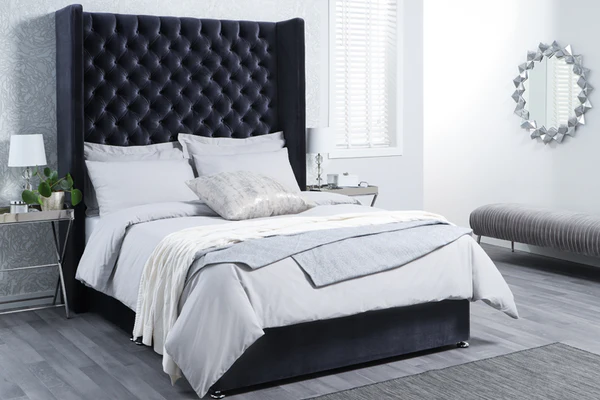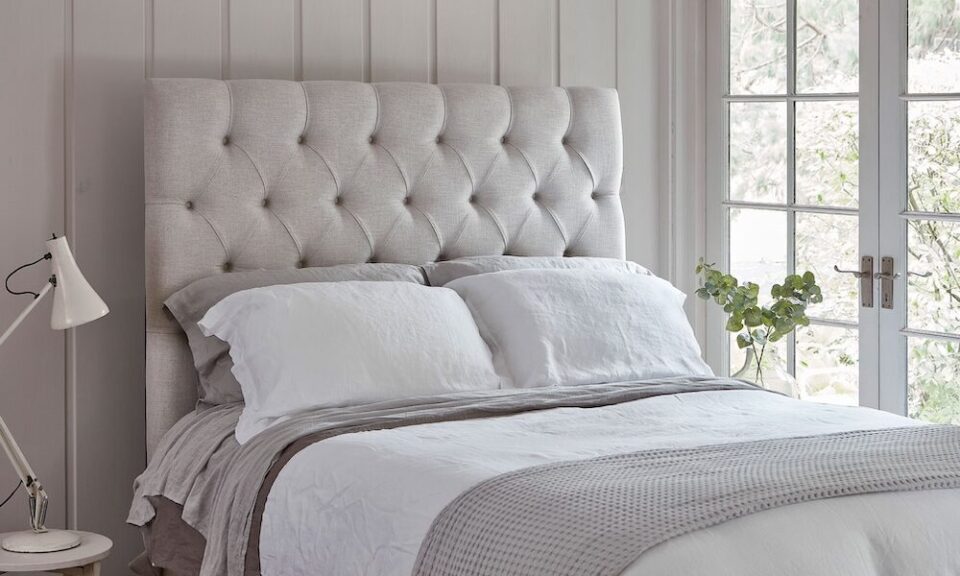A headboard is not merely an ornamental addition to a bed frame; it serves multiple functional roles in enhancing sleep quality. Traditionally, headboards provided insulation and support, keeping sleepers comfortable against cold walls. Today, they contribute to both aesthetics and comfort, offering a backdrop for relaxation while ensuring a well-supported sleeping posture.
The height of a headboard significantly impacts posture during sleep and relaxation. A taller headboard provides additional back support for those who enjoy reading or watching television in bed, preventing strain on the spine and shoulders. Conversely, a lower headboard may offer minimal support, potentially leading to discomfort over time. Proper alignment between the headboard, pillows, and mattress ensures better ergonomic positioning, allowing the body to rest more naturally.
The Connection Between Headboard Height and Sleep Environment
A well-designed sleep environment promotes tranquility and restfulness, and headboard height plays an integral role in achieving this. A high headboard can create a sense of enclosure, reducing external distractions, while a low or no headboard fosters a more open and airy ambiance. The choice of height should complement the bedroom’s layout to encourage a peaceful and uninterrupted sleep experience.
The scale of a headboard influences the subconscious association with rest and relaxation. A taller, more substantial headboard can evoke a feeling of security and coziness, helping the mind transition into a restful state. On the other hand, a smaller headboard or an absence of one may contribute to a less defined sleeping space, potentially affecting relaxation levels.
Headboard Height and Sleep Comfort
Tall headboards provide a sense of enclosure, which can be particularly beneficial for those who feel more secure in a defined space. This psychological effect is similar to the comfort of a cocoon, offering a subconscious barrier that enhances sleep quality by reducing feelings of vulnerability.
While low or absent headboards can contribute to a minimalist aesthetic, they may lack the structural support necessary for comfortable rest. Without the presence of a headboard, sleepers may experience discomfort from wall contact or feel a lack of spatial definition, which can subtly affect sleep patterns.
A headboard’s height plays a crucial role in spinal health. Taller headboards provide better lumbar support when sitting up in bed, reducing strain on the neck and shoulders. Choosing the right height ensures that pillows remain in place, supporting proper head and neck alignment throughout the night.
Headboards can impact airflow around the bed, influencing temperature regulation. Taller headboards may block cool air circulation, while lower headboards allow for a more open flow of air. Those who tend to overheat at night may benefit from a shorter headboard to promote better ventilation.
The Aesthetic Influence of Headboard Height on Bedroom Ambiance
Tall headboards add a luxurious and grand feel to a bedroom. Their presence can transform a simple sleeping space into an elegant retreat, making the bed the focal point of the room.
Low or absent headboards complement minimalist interior designs, creating a sleek and uncluttered look. This style is perfect for those who prefer an airy and modern aesthetic that maximizes space.
Proportion is key in bedroom design, and the height of a headboard should harmonize with other furniture elements. A tall headboard in a small room may feel overpowering, while a low headboard in a spacious setting might seem insignificant.
To create a visually appealing bedroom, headboard height should complement the room’s ceiling height. Tall ceilings accommodate grander headboards, while lower ceilings benefit from a more moderate approach.
Choosing the Right Headboard Height for Your Sleep Needs

The height of a headboard should be compatible with mattress thickness. A thick mattress with a short headboard may create an awkward proportion, while a thin mattress with an overly tall headboard may seem unbalanced.
Back sleepers may benefit from higher headboards for additional support, while side sleepers may find moderate heights more accommodating. Stomach sleepers, who require minimal elevation, might not need a headboard at all.
Custom headboards offer a tailored approach to sleep and design preferences. They allow for personalized comfort levels but may require additional costs and planning.
Adjustable headboards provide flexibility for varying sleep needs, making them an excellent option for those who anticipate changes in their sleep habits over time.
Effects of Headboard Height on Relaxation
The height of a headboard plays a significant role in shaping the overall psychological impact of a bedroom. A well-proportioned headboard can evoke feelings of comfort, security, and tranquility, while an improperly sized one may create a sense of imbalance or unease. Taller headboards tend to provide a feeling of enclosure and protection, making the bed feel like a personal sanctuary. This sense of security can promote relaxation and a deeper sense of restfulness.
Conversely, a lower headboard or the absence of one can contribute to a feeling of openness and spaciousness. While this can be ideal for those who prefer a minimalist aesthetic, it may not provide the same level of grounding and support that a higher headboard offers. The perception of space, privacy, and coziness is influenced by headboard height, shaping how an individual experiences relaxation in their bedroom environment.
Additionally, headboard height can influence subconscious associations with structure and stability. A sturdy, well-sized headboard fosters a sense of grounding, which can be particularly beneficial for individuals who experience anxiety or restlessness at night. On the other hand, an improperly scaled headboard may contribute to feelings of instability, subtly affecting overall sleep quality. Choosing the right headboard height ensures that both the mind and body feel at ease, leading to a more restful and rejuvenating sleep experience.

